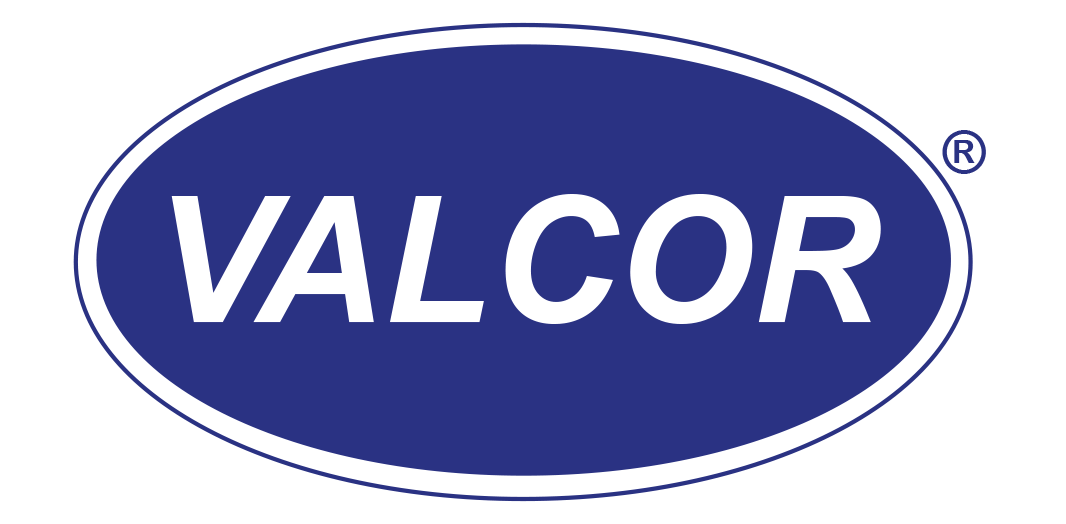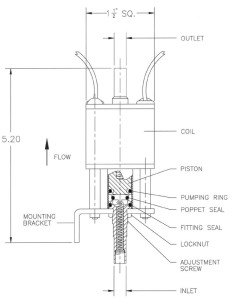INTRODUCTION
Valcor Scientific, a Division of Valcor Engineering Corporation has designed and manufactured dispensing pumps for precision flows for a broad array of applications for over 40 years. The SV500 Series dispensing pumps are cost-effective, low maintenance dispensers for a wide variety of liquids compatible with stainless steel. Each model provides a different range of flow.
CONSTRUCTION
The wetted materials used in the construction of SV500 Series pumps include 302, 303, 304 and 430F series stainless steel, with PKM or EPDM elastomeric seals. (For more aggressive or corrosive liquids, Valcor Scientific has developed the SV600 Series of dispensing pumps. Please consult the SV600 Series data sheets for more information.)
The accompanying diagram illustrates the internal construction of the SV500 Series pump. The pumps employ Valcor’s exclusive dynamic o-ring pumping system, which divides the bottom portion of the pump into lower and upper chambers. The o-ring acts as a seal when the coil is energized and the piston is pulled upward on its dispense stroke. The liquid ahead of the o-ring is pushed out of the upper chamber while liquid is pulled in through the pump inlet. As the piston completes its travel, the inlet check valve closes to prevent back flow of the “new” fluid that has just entered the pump.
During de-energization on the return stroke, the o-ring allows “flow-by” of liquid below it into the upper chamber, resulting in a fresh volume ready for discharge. The volume of liquid dispensed per stroke is determined by the piston stroke length, which is set manually. This is done by simply loosening the lock nut on the inlet fitting and rotating the fitting in or out of the pump. The pumps can be operated to achieve very small one-stroke dispenses or larger accumulated batches or flow rates by repetitive pulsing.
MORE INFORMATION
A dynamic pump o-ring rides in a grove on the piston. When the solenoid coil is energized, the piston is pulled upward, causing the pump o-ring to create a seal between the piston and the chamber wall. This forces liquid in the upper chamber through the outlet. At the same time, the inlet poppet check valve opens,
allowing the lower chamber to be refilled. When the solenoid coil is de-energized, the piston is pushed back by the return spring. At the same time, the inlet check valve closes allowing liquid from the lower chamber to be forced behind the pump o-ring into the upper chamber.
The complete pumping cycle requires energizing the coil to cause upward piston stroke, and de-energizing to allow the downward stroke, returning the piston to its initial position. Minimum energization and de-energization times vary with stroke and model number, and are specified on data sheets for each model.


Recent Comments